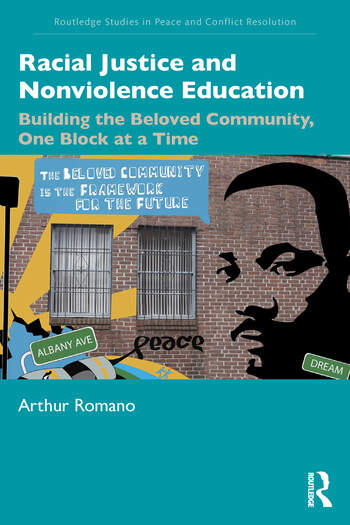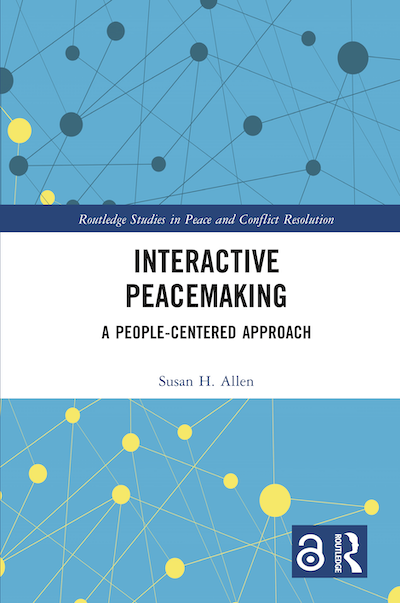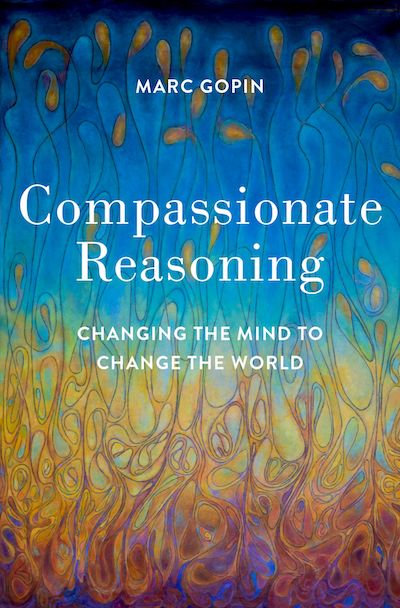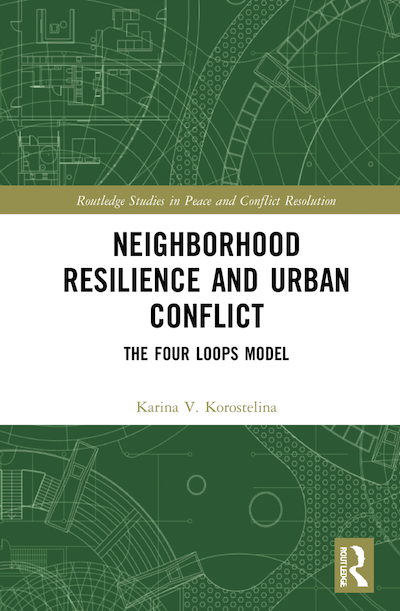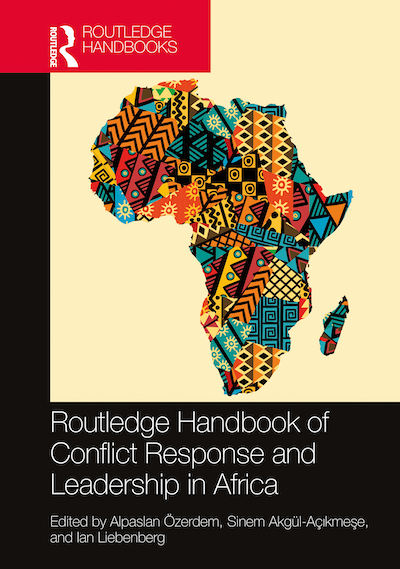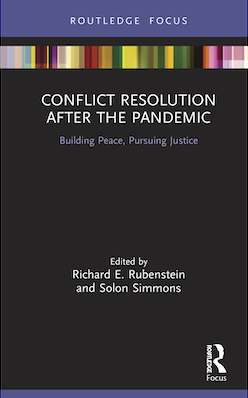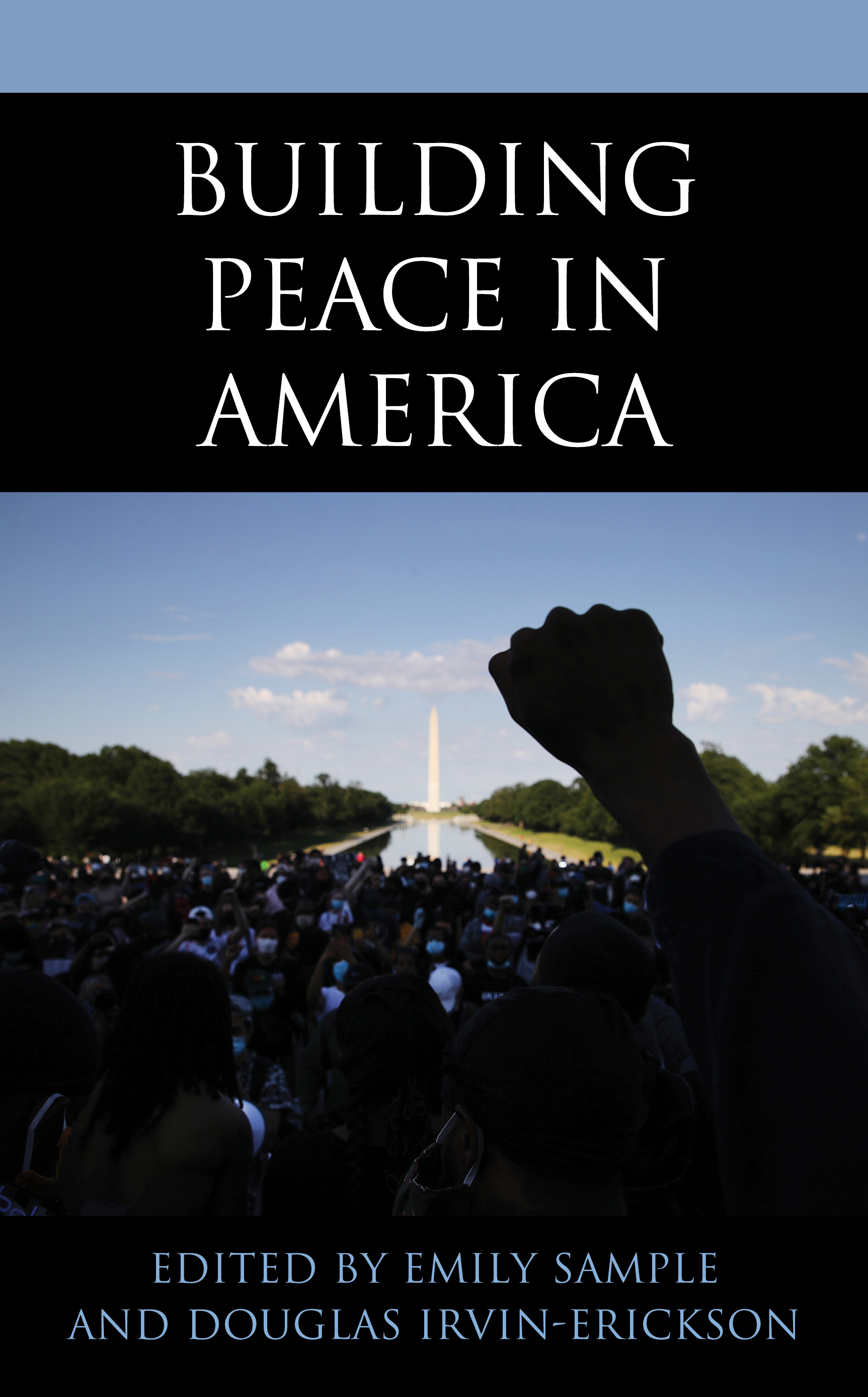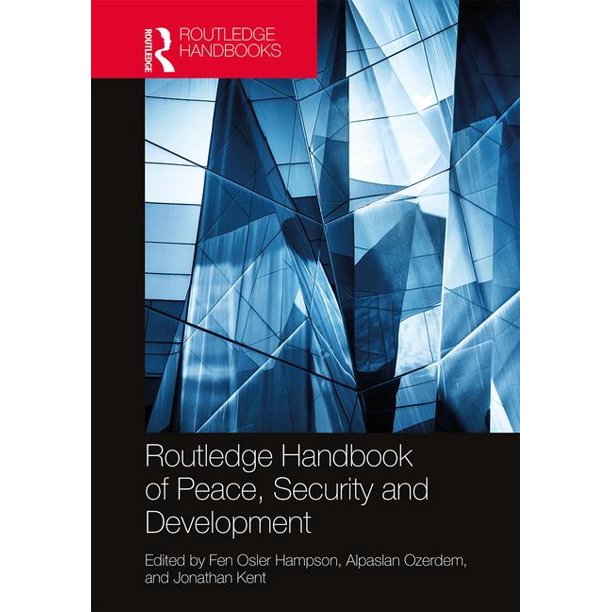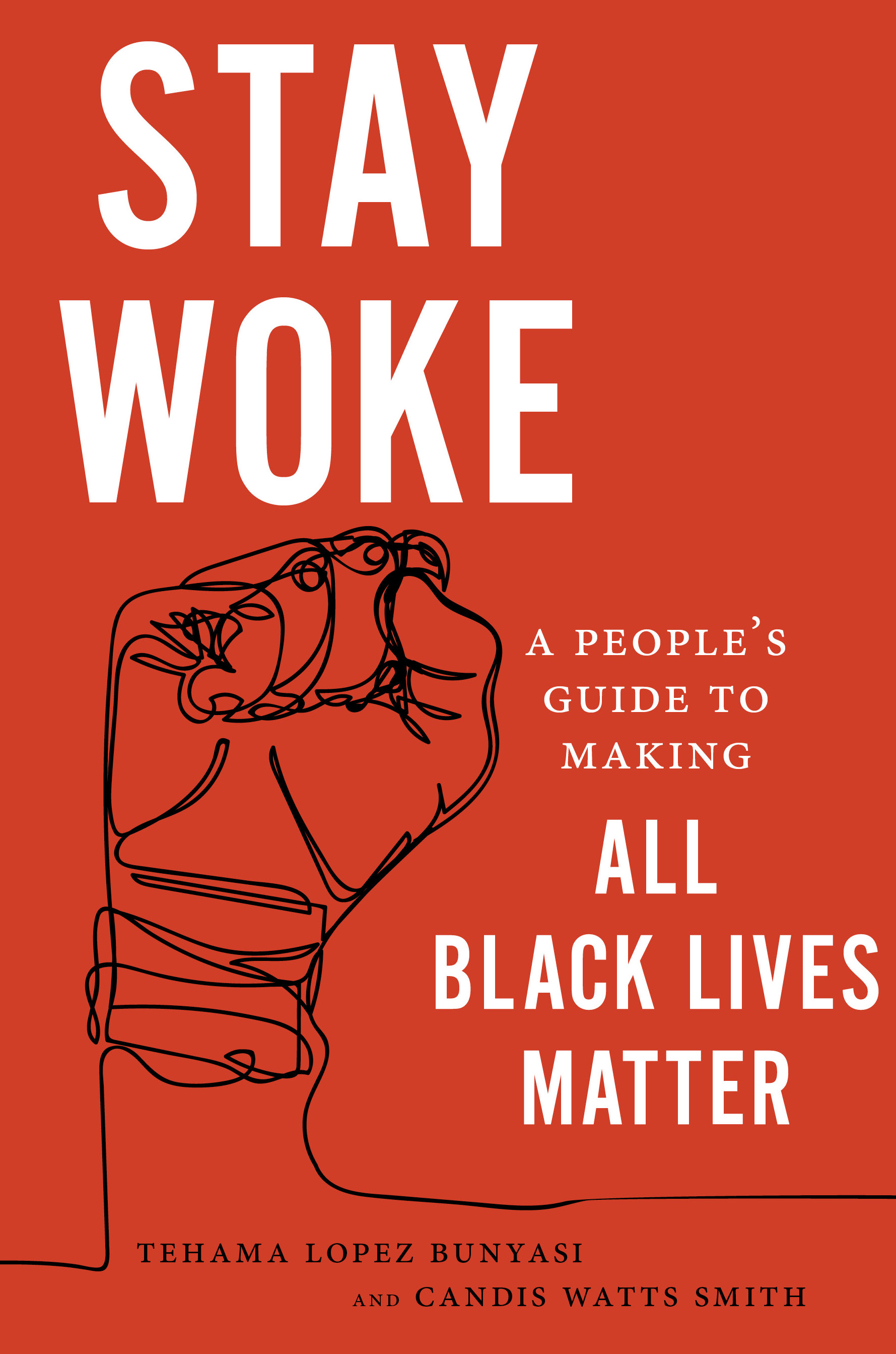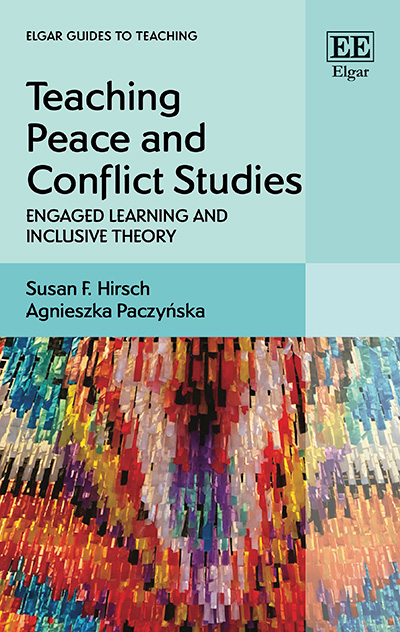
Teaching Peace and Conflict Studies: Engaged Learning and Inclusive Theory
Susan F. Hirsch and Agnieszka Paczyńska
2024
This insightful book guides instructors on how to introduce undergraduate and postgraduate students to the interdisciplinary work of Peace and Conflict Studies (PACS). Mindful that many students come to PACS with a desire to create positive social change, Susan F. Hirsch and Agnieszka Paczyńska highlight engaged learning as a key method to PACS pedagogy and emphasise the need to teach theory with an inclusive and decolonialist approach. The book offers both new and experienced instructors concrete advice regarding structuring assignments, designing classroom-based engaged learning activities and highlighting reflective practice and ethics.
Racial Justice and Nonviolence Education: Building the Beloved Community, One Block at Time
Arthur Romano
2022
This book examines the role that community-based educators in violence-affected cities play in advancing Dr. Martin Luther King Jr.’s radical nonviolent vision for racial and social justice.
This work argues that nonviolence education can help communities build capacity to disrupt and transform cycles of violence by recognizing that people impacted by violence are effective educators and vital knowledge producers who develop unique insights into racial oppression and other forms of systemic harm. This book focuses on informal education that takes place beyond school walls; a type of education that too often remains invisible and undervalued in both civil society and scholarly research. It draws on thousands of hours of work with the Connecticut Center for Nonviolence (CTCN), a grassroots organization that presents an ideal case study of the implementation of King’s core principles of nonviolence in 21st-century urban communities. Stories of educators’ life-changing educational encounters, their successes and failures, and their understanding of the six principles of Kingian nonviolence animate the text. Each chapter delves into one of the six principles by introducing the reader to the lives of these educators, providing a rich analysis of how educators teach each principle, and sharing academic resources for thinking more deeply about each principle. Against the backdrop of today’s educational system, in which reductive and caricatured treatments of King are often presented within the formal classroom, CTCN’s work outside of the classroom takes a fundamentally different approach, connecting King’s thinking around nonviolence principles to working for racial justice in cities deeply impacted by violence.
This book will be of much interest to students of conflict resolution, race studies, politics, and education studies, as well as to practitioners in the field.
Table of Contents
Introduction
1. Nonviolence is a Way of Life for Courageous People
2. The Beloved Community is the Framework for the Future
3. Attack forces of evil, not persons doing evil
4. Accept Suffering without Retaliation for the Sake of the Cause to Achieve the Goal
5. Avoid internal violence of the spirit as well as external physical violence
Conclusion: The Beloved Community is a Learning Community
Review
"Racial Justice and Nonviolence Education is a must read for any educator working to create a healthy culture in their classrooms, or for anyone working on peace building anywhere. Romano combines touching, real life stories along with theory to bring the philosophy of nonviolence to life. This book helps to keep Dr. King’s legacy current and alive."--Kazu Haga, Kingian nonviolence trainer, Founder and Coordinator of East Point Peace Academy (Oakland, CA) and author of the book Healing Resistance: A Radically Different Response to Harm
Interactive Peacemaking: A People-Centered Approach
Susan Allen
2022
This book examines the theory and practice of interactive peacemaking, centering the role of people in making peace.
The book presents the theory and practice of peacemaking as found in contemporary processes globally. By putting people at the center of the analysis, it outlines the possibilities of peacemaking by and for the people whose lives are touched by ongoing conflicts. While considering examples from around the world, this book specifically focuses on peacemaking in the Georgian-South Ossetian context. It tells the stories of individuals on both sides of the conflict, and explores why people choose to make peace, and how they work within their societies to encourage this. This book emphasizes theory built from practice and offers methodological guidance on learning from practice in the conflict resolution field.
This book will be of much interest to students and practitioners of peacemaking, conflict resolution, South Caucasus politics and International Relations.
Compassionate Reasoning: Changing the Mind to Change the World
Marc Gopin
2022
Around the globe, people who work in the helping professions are often heroic bridge-builders and creators of peaceful societies. They have in common, Marc Gopin argues, a set of cultivated moral character traits and psychosocial skills. They tend to be kinder, more reasonable, more self-controlled, and more goal-oriented towards peace. They are united by a particular set of moral values and the emotional skills to put those values into practice, allowing them to excel in what he calls “Compassionate Reasoning.” In this book, Gopin draws upon the history of ethics along with his own thirty-year career in the field of peacebuilding to develop an understanding of this type of reasoning.
The very multiplicity of approaches to ethics, says Gopin, invites us to look for higher principles and intuitions. In discovering the worlds of others, we also clarify our own deepest moral principles and commitments. By utilizing Compassionate Reasoning, individuals with divergent moral principles and intuitions can find a way to talk to each other and to meet in a common universe of ethical concern. Gopin explores this as a way to build peace, especially across divides of politics, race, religion, and culture.
Neighborhood Resilience and Urban Conflict: The Four Loops Model
Karina V. Korostelina
2022
This book explores the resilience in urban neighborhoods affected by chronic conflict and violence, developing a new model for improving resilience policies.
The neighborhood resilience approach is an inclusive form of building positive resilience, which recognizes that local communities possess valuable skills and experience of dealing with crises, and prioritizes the agency of local communities in the production of knowledge and developing practices. The book identifies and describes the repertoire of neighborhood resilience practices organized in four clusters: (1) addressing the structure of conflict; (2) increasing the effectiveness of external resources; (3) enhancing the community capacities; and (4) reflecting the dynamics of identity and power in neighborhoods. One of the key findings of the book is the nonlinear connections between structure and dynamics of conflict and neighborhood resilience practices represented in the Four Loops Model. The concentration on community-based practices addresses macro-level critiques of neo-liberalism in critical resilience studies and encourages rethinking the ways community-based indicators might operate in combination with existing macro indicators of resilience. The bottom-up indicators provide more specific details and essential localized experiences for improving resilience policies at the national level.
This book will be of much interest to students of conflict resolution, resilience, urban studies, and US politics.
Routledge Handbook of Conflict Response and Leadership in Africa
Edited by Alpaslan Özerdem, Sinem Akgül-Açıkmeşe, and Ian Liebenberg
2022
This handbook explores the challenges and opportunities for leadership and conflict response in the context of Africa at several levels.
Leadership plays a vital role in affecting conflict response but is frequently only examined at the macro level of state, government, and international organizations. This handbook addresses the need to explore challenges and opportunities for leadership at several levels: macro (global, regional, national), meso (NGOs, religious groups, academics), and micro (civil society organizations, youth groups, women’s organizations). Analysis from multiple levels provides a broader explanation of conflict dynamics and helps to fit localized conflict transformation approaches into wider national or regional structures. The multidisciplinary essays presented in this volume encompass the psychological, political, and structural dimensions of conflict response and demonstrate how its success is fundamentally linked to the style of effectiveness of leadership, among other factors.
Conflict Resolution after the Pandemic: Building Peace, Pursuing Justice
Edited by Richard Rubenstein and Solon Simmons
2021
In this edited volume, experts on conflict resolution examine the impact of the crises triggered by the coronavirus and official responses to it.
The pandemic has clearly exacerbated existing social and political conflicts, but, as the book argues, its longer-term effects open the door to both further conflict escalation and dramatic new opportunities for building peace. In a series of short essays combining social analysis with informed speculation, the contributors examine the impact of the coronavirus crisis on a wide variety of issues, including nationality, social class, race, gender, ethnicity, and religion. They conclude that the period of the pandemic may well constitute a historic turning point, since the overall impact of the crisis is to destabilize existing social and political systems. Not only does this systemic shakeup produce the possibility of more intense and violent conflicts, but also presents new opportunities for advancing the related causes of social justice and civic peace.
Building Peace in America
Edited by Douglas Irvin Erickson and Emily Sample
2020
America may not be at war, but it is not at peace. Recent public and political rhetoric have revealed the escalation of a pervasive and dangerous “us versus them” ideology in the United States. This powerful book is motivated by the contributors’ recognition of continuing structural violence and injustice, which are linked to long-standing systems of racism, social marginalization, xenophobia, poverty, and inequality in all forms. Calls to restore America’s greatness are just the most recent iteration of dehumanizing language against minority communities. The violation of the civil and human rights of vulnerable groups presents a serious threat to American democracy. These deeply rooted and systemic inequities have no easy solutions, and the destructive nature of today’s conflicts in America threaten to impede efforts to build peace, promote justice, and inspire constructive social change.
Routledge Handbook of Peace, Security and Development
Edited by Alpaslan Özerdem, Fen Osler Hampson, and Jonathan Kent
2020
This Handbook offers a comprehensive examination of the peace, security, and development nexus from a global perspective, and investigates the interfaces of these issues in a context characterised by many new challenges.
For the Sake of Peace: Africana Perspectives on Racism, Justice, and Peace in America
Edited by Charles L. Chavis Jr. and Sixte Vigny Nimuraba
2020
For the Sake of Peace examines racism and injustice in the United States through the eyes of those of African descent. Historically America has promoted itself as the moral police promoting democracy across the globe, offering her perspectives and ideas to combat poverty and racial and ethnic violence. The rise of overt political racism and intolerance has made visible, for a global audience for the first time since the Civil Rights Movement, the deeply rooted systems of discrimination and identity-based conflicts in the United States, that gives rise to structural and direct violence. African Americans, like other minorities, find themselves in a unique position in this age as new forms of race lynching continue to go unchecked; voting rights continue to be suppressed; prisons continue to serve as a mechanism for disenfranchising minorities and the poor.
Stay Woke: A People's Guide to Making All Black Lives Matter
Tehama Lopez Bunyasi
2019
The essential guide to understanding how racism works and how racial inequality shapes Black lives, ultimately offering a road-map for resistance for racial justice advocates and antiracists.
Book Launch Video
Root Narrative Theory and Conflict Resolution: Power, Justice, and Conflict Resolution
Solon Simmons
2020
This book introduces Root Narrative Theory, a new approach for narrative analysis, decoding moral politics, and for building respect and understanding in conditions of radical disagreement.
Root Narrative Theory Overview

